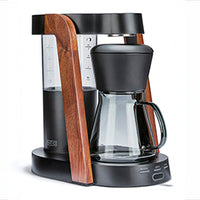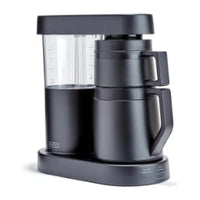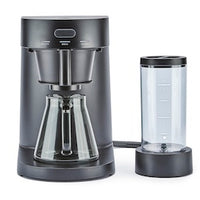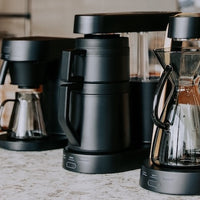Why Great Beans Can Still Taste Flat in the Wrong Cup
Key Takeaways
-
The material, thickness, and shape of your cup influence coffee’s perceived flavor and aroma
-
Heat retention plays a critical role in keeping your brew at its best for longer
-
Porous or scented cups can leach unwanted flavors into coffee
-
The right cup design can highlight sweetness, acidity, and body
-
Choosing a cup isn’t just about looks — it’s about enhancing the drinking experience
You’ve invested in high-quality beans, dialed in your grind, nailed the brewing process… and yet your coffee tastes dull. Before blaming the roast or your technique, consider something less obvious: the cup you’re drinking from.
It might sound minor, but the vessel you choose has a direct effect on how coffee smells, tastes, and even feels. Just like wine benefits from the right glassware, coffee can be elevated — or compromised — by what holds it.
How Cup Material Changes the Game
Different materials interact with coffee in surprising ways. Some hold heat well, some mute aroma, and others alter flavor perception entirely.
Ceramic
The most common choice for coffee drinkers, ceramic is non-porous and neutral in taste. Glazed ceramic mugs maintain flavor integrity and have decent heat retention. However, thin-walled ceramic loses heat faster than thicker mugs.
Glass
Glass cups showcase your brew visually and don’t alter flavor. But without double-walled insulation, they lose heat quickly. Temperature drop affects perceived sweetness and balance.
Stainless Steel
Highly durable and excellent at retaining heat (especially vacuum-insulated designs). However, cheaper stainless steel cups can impart a metallic taste if not properly lined or cleaned.
Enamel
Lightweight and nostalgic, but not the best at keeping coffee hot. Enamel mugs can chip, exposing underlying metal and altering flavor.
Plastic
Lightweight and shatterproof, but often affects aroma and taste. Even “BPA-free” plastics can retain old odors, impacting flavor perception.
The Role of Heat Retention
Flavor isn’t static — it evolves as coffee cools. Some notes become more pronounced, others fade. Rapid cooling can shorten the “sweet spot” where your brew tastes best.
Factors that improve heat retention:
-
Thick walls or double-wall construction
-
Smaller openings to reduce surface area
-
Preheating your cup before pouring
If your coffee loses heat too quickly, flavors flatten and aromas fade. This is especially noticeable with delicate, lightly roasted beans that rely on subtle notes.
Shape and Rim Design Affect Flavor
The way coffee hits your palate can change based on cup shape.
-
Wide-mouthed cups allow more aroma to reach your nose but cool the coffee faster.
-
Narrow openings trap heat and concentrate aroma, but limit the immediate bouquet.
-
Curved interiors guide coffee toward specific parts of your tongue, enhancing perceived sweetness or acidity.
Specialty cafes often choose cup shapes intentionally to match the style of coffee served.
How Old Flavors Linger in “Clean” Cups
Even cups that look spotless can hold onto old flavors, especially porous materials or mugs that haven’t been deep-cleaned. Coffee oils cling to surfaces and can go rancid over time, subtly tainting fresh brews.
To avoid this:
-
Deep clean mugs regularly with baking soda or specialty coffee cleaners
-
Avoid scented dish soaps that leave lingering aromas
-
Store cups in a clean, odor-free area
Matching the Cup to the Coffee
For espresso
A small, thick-walled demitasse retains heat for short, intense sips.
For filter coffee
Medium-sized ceramic or double-walled glass cups balance heat retention with aroma release.
For cold brew or iced coffee
Tall glasses show off clarity and allow room for ice, but insulated tumblers prevent dilution from melting ice.
Matching your vessel to your brew style ensures you experience the coffee as intended.
Why “Looks” Can Be Deceiving
A stylish mug may catch your eye, but not all are designed with coffee quality in mind. Novelty shapes can cause uneven heat distribution or awkward sipping angles. Even a beautifully crafted cup can hinder your brew if it prioritizes aesthetics over function.
When Beans and Brew Are Perfect — But the Cup Fails
Imagine brewing a perfectly balanced single-origin pour-over with nuanced floral and citrus notes. You pour it into a thin-walled glass mug that cools rapidly. Within minutes, the once vibrant acidity fades, leaving a muted, almost lifeless cup. The fault isn’t the coffee — it’s the vessel.
This disconnect can frustrate home brewers who work hard to control every variable except the one they sip from.
Bringing It All Together
Great coffee isn’t just about the beans and brewing method — it’s about preserving that work all the way to your lips. The right cup maintains temperature, allows aroma to bloom, and delivers the coffee cleanly to your palate.
Brewing with a precision coffee machine from Ratio Coffee ensures your cup starts at its best. Choosing the right vessel ensures it stays that way until the last sip.
Frequently Asked Questions
Does cup material really change taste?
Yes. Some materials are porous or retain odors, while others keep flavor pure.
Should I preheat my cup?
Absolutely. Preheating helps maintain optimal serving temperature longer.
What’s the best cup for latte art?
Wide-mouthed ceramic cups allow better control when pouring and enhance presentation.
Can I use scented dish soap on coffee cups?
It’s better to avoid — lingering scents can alter coffee’s aroma and taste.
Is an insulated cup worth it?
Yes, especially if you drink slowly or want to keep coffee hot during commutes.
 Ratio Eight S2
Ratio Eight S2
 Ratio Eight Original
Ratio Eight Original
 Ratio Six
Ratio Six
 Ratio Four
Ratio Four
 Compare Machines
Compare Machines






